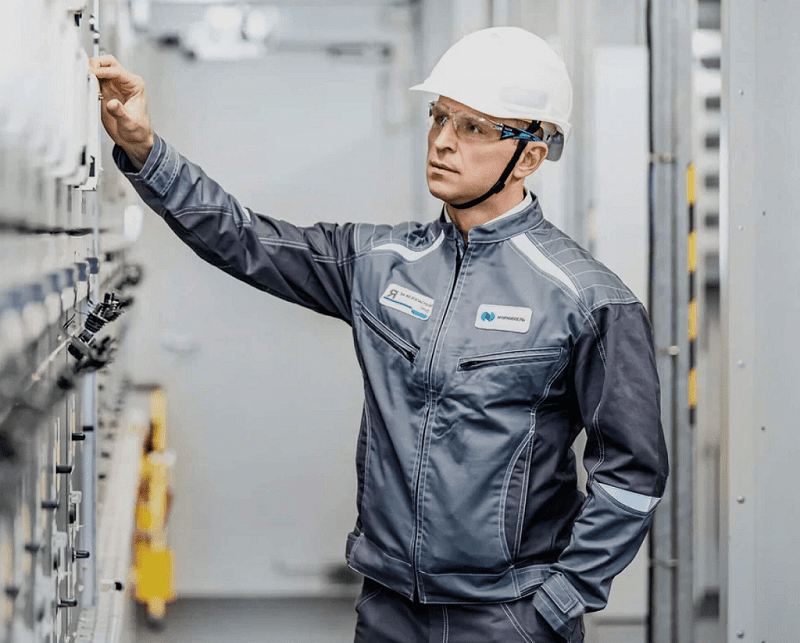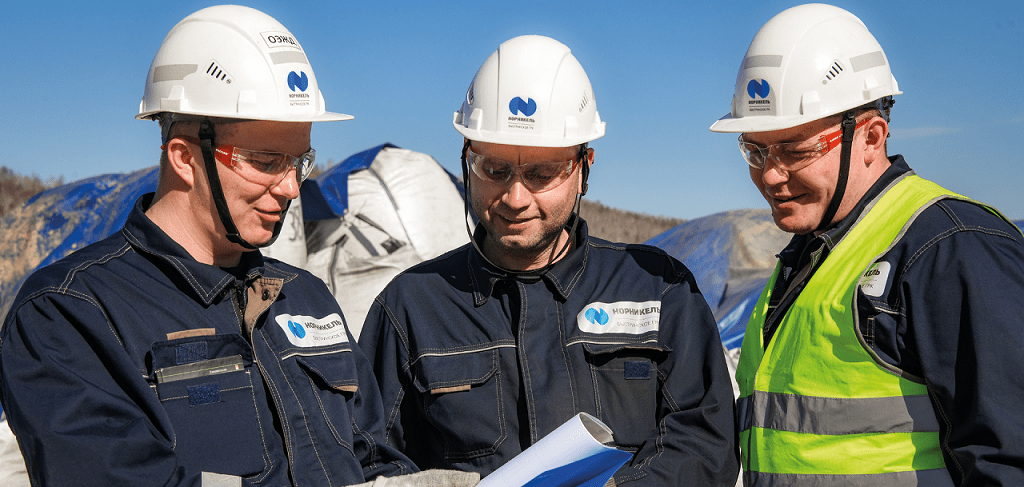H&S system development and mitigation of key risks
The Company plans to achieve its goals of reducing work‑related injuries and eliminating fatalities by enhancing the health and safety system, which is implemented across all operations.
As part of its ongoing effort to develop the H&S system, Nornickel applies Patrick Hudson’s Safety Culture Ladder methodology. By 2030, the Company aims to gradually progress to higher maturity levels within Hudson’s model, from the current score of 2.4–2.7 to the target level of 5.0. To do this, the Company is implementing safety culture projects of varying scale and scope, including Developing Risk‑Based Thinking, Reframing the Image of H&S, Developing the H&S Train‑the‑Trainer Programme, H&S Internal Communication System, and others.
Developing risk‑based thinking
In 2024, Nornickel continued implementing its safety culture transformation project across Polar Division mines by developing risk‑based thinking – specifically, identifying and mitigating workplace hazards.
In 2023, Nornickel launched a unified incentive system to encourage workplace hazard identification, offering fixed payments ranging from RUB 5 thousand to RUB 10 thousand depending on the employee’s level of involvement in risk management. Employees are informed about this process during dynamic risk assessment training sessions, and memos have been developed to outline the reporting procedure.

Reframing the image of H&S
Since December 2023, the Company has been implementing a project to reframe the image of its H&S teams. The first step was to make a baseline image assessment using four key criteria:
- Value for the relevant units (related functions and operations)
- Fairness and consistency in decisions and actions (no favouritism for some and excessive scrutiny for others)
- Accessibility and openness (people should know where to find H&S specialists, how to contact them, and where to go with questions or concerns)
- Communication (no unethical behaviour)
A total of 128 managers of the H&S function had their competencies assessed, each receiving an individual report with development recommendations. A double‑blind method covering 8 thousand markers was used to evaluate and analyse the results, eliminating the possibility of result manipulation. Senior managers could get feedback in writing as well as through face‑to‑face discussions. Based on this feedback, all managers of the H&S function were instructed to draw up individual development plans and implement at least two internal projects aimed at reshaping the function’s image. Examples included the secondment of H&S employees to production units, the identification of unsafe operations, and other initiatives. Successful projects implemented in the reporting period will be scaled in 2025.
On top of that, trainings sessions tailored to employees’ actual needs were delivered based on the assessment results. The trainings focused primarily on partner influence, communication in challenging environments, and delivering appropriate feedback. Over the year, a total of 884 people participated in three waves of training, with each participant completing an average of three sessions. The training programme also included practical tasks: participants received assignments via messengers, carried them out using their newly acquired skills, and received feedback on their performance. Positive outcomes of the initiative included improved communication and stronger presentation skills.
Nornickel’s internal corporate standard regulates the procedure for refusing to work when there is a hazard that threatens the employee’s life or health. Anyone who identifies such a hazard must report it to their immediate superior for further action. Once management has been informed, the employee exposed to the risk may leave the workplace without obstruction until the threat to their health and safety has been eliminated. Refusal to work under life‑ and health‑threatening conditions does not result in any disciplinary action against the employee.
The largest share of health and safety expenses is related to the purchase of personal protective equipment (24%) and ensuring production facilities’ compliance with H&S requirements (18%).
OPEX for health and safety in 2024
Special assessment of working conditions
Hazardous and harmful workplace factors are identified during a special assessment of working conditions (SAWC). Based on its results, employees are provided free of charge with personal protective equipment (PPE), including respiratory, hearing, eye, and skin protection.
Provision of personal protective equipment
Provision of personal protective equipment
Underground work, extreme climate conditions, and the operation and maintenance of metallurgical equipment and heavy self‑propelled vehicles result in specific working conditions and certain impacts. Nornickel protects its employees from workplace health and safety hazards by implementing organisational safety measures and providing PPE.
To ensure that employees receive effective and comfortable PPE, trials of new equipment were conducted at the Group’s industrial facilities as part of the transition to products from domestic suppliers.
Nornickel’s Supernika mobile app features an AI‑powered bot that allows employees to track the PPE issued to them and receive alerts when replacements are needed. Managers can use the system to monitor PPE provision for their teams. More than 850 employees have joined this interactive online programme.
IT for safety on the shop floor
In 2024, a project to detect the presence of employees in the buckets of load‑haul‑dump machines was implemented at Severny Mine, operated by the Polar Division’s Kola site metals and mining enterprise.
Mining machinery is equipped with built‑in video recorders that transmit footage to the IT team. The system has been trained to automatically detect safety violations without human intervention. Retrospective video footage dating back to 2013 was used to train the neural network, which accurately identified all instances where people were present in the bucket.
A separate project is also underway to detect whether employees are wearing safety harnesses when working at height. This system has been in place since 2023 at the Trans‑Baikal Division, where stationary cameras have been connected and are processing data using video analytics. When the system is scaled, a different setup will be used – cameras mounted on portable tripods. This approach is particularly relevant for construction sites, where the risk of employees working at height without a harness is high. Tripod‑mounted cameras will help detect such violations and enhance safety at construction sites.
At the Kola site, a new project has been launched to monitor the area around the cutting line. A video analytics system will track the presence of personnel near operating equipment to prevent access to moving conveyor belts.
In 2025, we initiated a project to detect the presence of people in areas where loads are being moved. All cranes will be equipped with the necessary detection systems.
